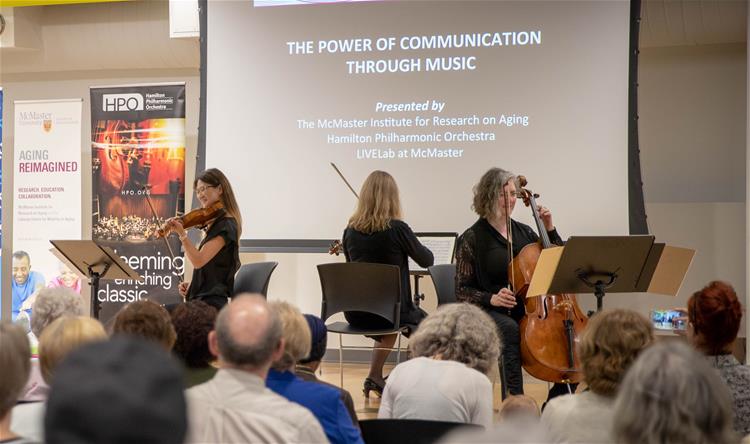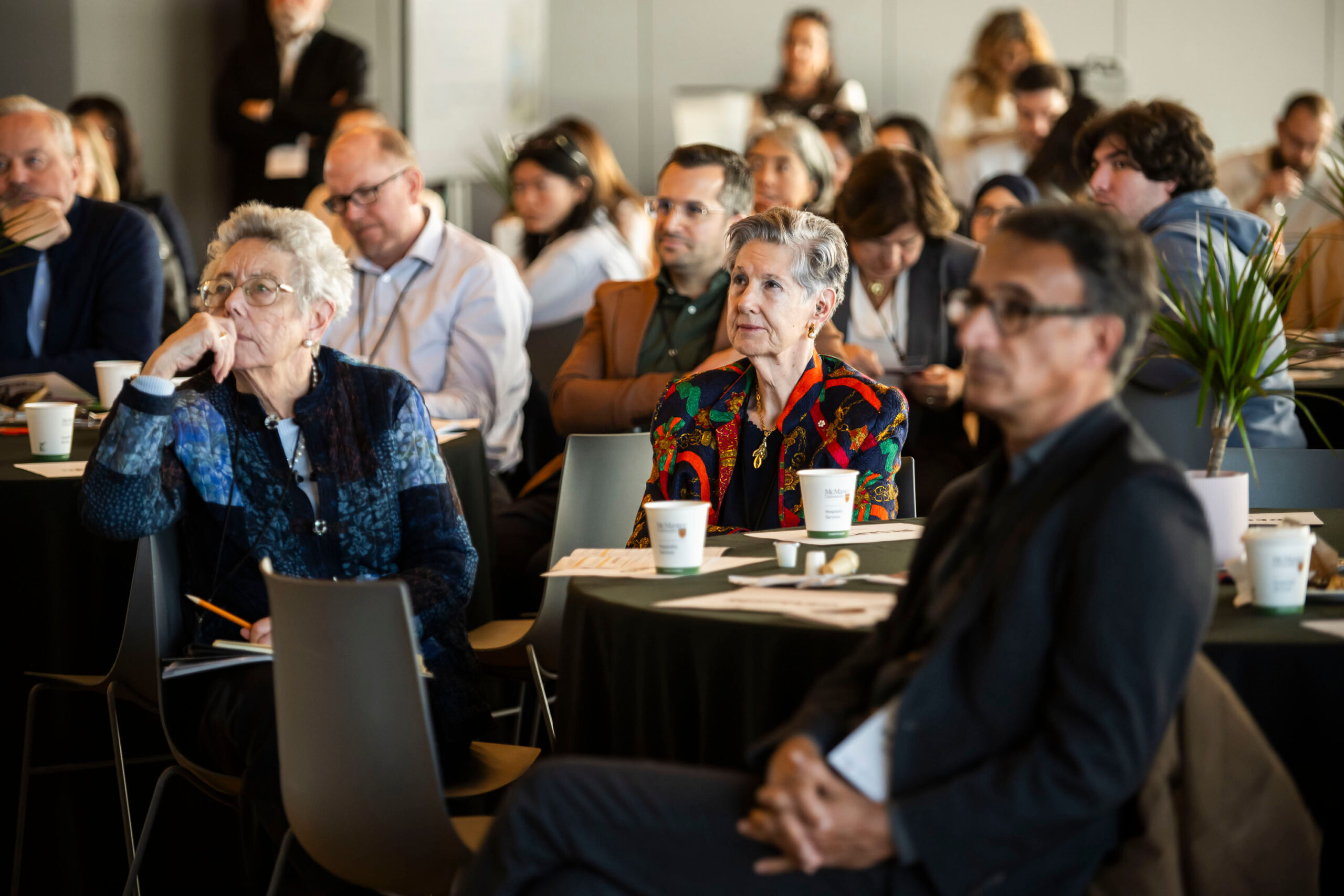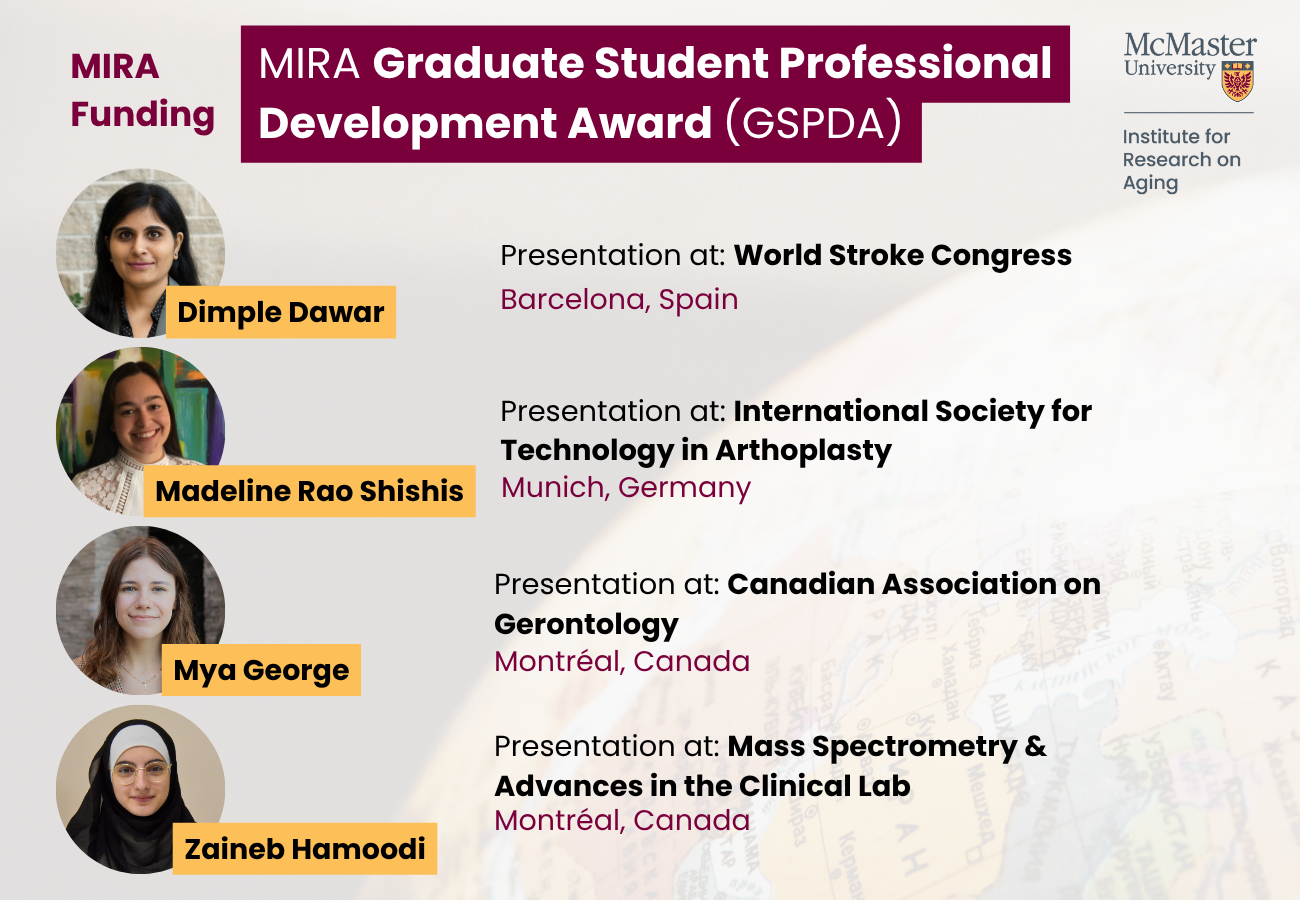
Hamilton Philharmonic Orchestra violinist Cecilia Chang, viola player Elspeth Thomson and cellist Laura Jones play chamber music with their backs to one another at an event at the Hamilton Public Library. Photo by Anna Verdillo
The perfect chamber music recital is a triumph of unspoken communication. It’s intricate and delicate. And it starts with a big, loud sniff.
As part of Seniors Month, members of the Hamilton Philharmonic Orchestra and researchers from McMaster University came together for a performance and lecture around the power of communication between musicians themselves and their audience members — and what can happen when aging-related factors such as hearing loss get in the way of that musical communication.
The public event was a collaboration between the orchestra, the McMaster Institute for Research on Aging, the McMaster Institute for Music and the Mind and the Hamilton Public Library.​
A string trio played Mozart and Dohnanyi to illustrate how communication both in chamber music and everyday conversation require performers and participants to listen, watch and move in response to one other.
With no conductor to guide them, chamber musicians rehearse for hours just to sound good. But to truly perfect their performance, they need more. They need to learn to read each other’s signals so they can anticipate and respond to each other on the fly.
“We wanted audiences to get a sense of how much communication goes into the performances they see,” said the orchestra’s composer in residence, Abigail Richardson-Schulte. “Once the audience understands the depth and level of communication, they’ll get more out of the music and the experience.”
Every performance begins with a sharp sniff from one player to cue the music, much like the starter’s pistol for a race.
Once you know to listen for it, you can’t miss the sniff, Richardson-Schulte explained. But other signals are more subtle, like a slight motion or shift in posture.
Sometimes, even the musicians don’t know they’re sending or receiving these signals, yet they manage to match every note and every change in tempo as they perform. Richardson-Schulte compared it to conversation: People rely heavily on each other’s body language and unspoken signals when they converse.
The Philharmonic’s string trio and professor Laurel Trainor, who runs the Institute for Music and the Mind’s Large Interactive Virtual Environment lab (better known as the LIVElab), demonstrated how musicians react to and co-ordinate with each other’s “body sway.” As they play, they move their bodies — often without even realizing it — and the motions reflect what’s going on in their brains. Coordinated body sway can be an indicator of a powerful non-verbal connection – precisely the kind a group of musicians needs to play a complex piece of classical music together.
At one point, the musicians played the same piece of music twice: Once while facing one another the usual way, and once with their backs turned to one another.
“I still went through physical cues even though I knew they couldn’t see me,” violinist Cecilia Chang said of the second performance, where she, viola player Elspeth Thomson and cellist Laura Jones had to rely entirely on auditory cues to stay in sync. “But it was terrifying.”
Trainor walked the audience through research that tracks how musicians rely on body sway, changing their own motions to match each other as well as to reflect the emotions they’re expressing through the music.
Audiences experience the same effect at live performances, Richardson-Schulte said. That’s why watching musicians perform provides a much richer experience than just listening to a recording. And it’s why people with hearing impairments might prefer experiencing live performances, where they can see the performers and respond to their movements.
“It’s like lip-reading,” Trainor explained. Observing musicians’ body sway is not a substitute for perfect hearing, she added, but it does enhance your enjoyment.
Live music is a very complicated stimulus, Trainor said, but LIVElab is working on hearing aids for musical performances and other complicated settings.
This article was first published on Daily News. Read the original article.

